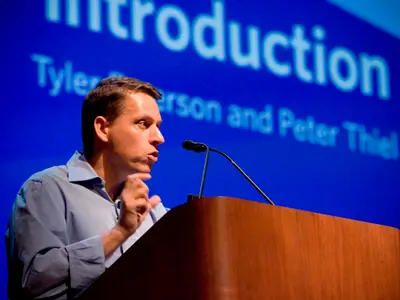Inside Peter Thiel’s Hedge Fund Empire Strategies, Success, and Secrets

peter thiel hedge fund Thiel is one of the most enigmatic and influential figures in the world of finance and technology. Known for his co-founding roles at PayPal and Palantir, and for being Facebook’s first outside investor, Thiel has also made a peter thiel hedge fund the hedge fund industry. Through his hedge fund Clarium Capital Management, and later his investments via Founders Fund and other vehicles, Thiel has reshaped how we think about capital allocation, big bets on the future, and contrarian thinking in the markets.
This in-depth article will take you through the rise, evolution, strategies, and impact of Peter Thiel’s hedge fund activities. If you’re looking to understand how one of Silicon Valley’s boldest minds applies his philosophies to finance, this is your definitive guide.
Table of Contents:
- Who is Peter Thiel?
- The Birth of Clarium Capital Management
- Clarium’s Rise and Fall: A Hedge Fund Case Study
- Founders Fund: Hedge Fund or Venture Vehicle?
- Philosophy-Driven Investing: Thiel’s Unique Approach
- Major Bets and Investment Strategies
- Controversies and Criticism
- How Peter Thiel Sees the Future of Finance
- Comparison with Other Hedge Fund Titans
- Lessons from Peter Thiel’s Hedge Fund Journey
- Conclusion: The Lasting Legacy of Peter Thiel’s Financial Empire
Who is Peter Thiel?
Peter Andreas Thiel is a German-American billionaire entrepreneur, venture capitalist, and political thinker. Born in Frankfurt, West Germany in 1967, Thiel moved to the United States at a young age. He graduated from Stanford University with a degree in philosophy and later received a J.D. from Stanford Law School.
Thiel’s major public breakthrough came as the co-founder and CEO of PayPal, which was sold to eBay in 2002 for $1.5 billion. After PayPal, Thiel didn’t rest—he created a powerful financial and technological empire that included hedge funds, venture capital, data analytics, and even biotech.
The Birth of Clarium Capital Management
After cashing out of PayPal, Thiel launched Clarium Capital Management in 2002. Unlike many hedge funds of the time, Clarium was unconventional. It started with Thiel’s own capital and operated with a macro investment strategy, making big, directional bets on interest rates, currencies, oil prices, and geopolitics.
At its peak, Clarium managed over $8 billion in assets, attracting institutional investors and high-net-worth individuals who were eager to back Thiel’s contrarian genius.
Clarium Capital stood out for three key reasons:
- No Management Fees: Thiel didn’t charge the traditional 2% annual fee.
- Global Macro Strategy: It focused on economic fundamentals, betting on big-picture trends.
- Unorthodox Culture: With a tight-knit, brainy team often composed of philosophers, chess champions, and technologists, Clarium wasn’t your average Wall Street operation.
Clarium’s Rise and Fall: A Hedge Fund Case Study
From 2002 to 2008, Clarium was a rising star. The fund returned over 60% in 2005 alone, driven by bold bets on oil prices and the weakening dollar. Thiel had predicted global imbalances and rode the commodity boom.
But after the 2008 financial crisis, things began to unravel. In 2009, Clarium lost 25%, and assets began to flee. By 2011, Clarium’s assets had shrunk to under $1 billion, and by 2013, it had all but vanished from the hedge fund scene.
Why Did Clarium Fail?
- Lack of Hedging: Clarium often took directional bets without sufficient downside protection.
- Overconfidence in Theories: Thiel’s philosophical approach sometimes led to inflexible views.
- Performance Volatility: The fund’s high-risk strategy led to extreme swings in performance.
- Changing Market Environment: Post-2008 monetary policy made macro predictions far more difficult.
Founders Fund: Hedge Fund or Venture Vehicle?
After Clarium, Thiel shifted focus to venture capital, launching Founders Fund in 2005 with PayPal alumni including Ken Howery and Luke Nosek. Though not a traditional hedge fund, Founders Fund adopted hedge-like strategies:
- Long-Term High Conviction Bets: Much like a hedge fund’s concentrated positions.
- Non-Conformist Thesis: Backing companies others wouldn’t touch.
- Thesis-Driven Capital Allocation: Investing in sectors like space, defense, and biotech early.
Founders Fund’s portfolio includes huge winners like Palantir, SpaceX, Airbnb, and Facebook. This move allowed Thiel to maintain influence in the capital markets while avoiding the pressures of quarterly hedge fund performance.
Philosophy-Driven Investing: Thiel’s Unique Approach
Peter Thiel is not just a capitalist—he is a deeply philosophical thinker. His book “Zero to One” outlines his belief in definite optimism: the idea that we should plan for and build the future, rather than let it happen to us.
In his investing:
- Thiel favors monopolies, not competition. He wants to back the “last mover,” not the fast follower.
- He believes contrarian thinking is key: “What important truth do very few people agree with you on?” is his favorite interview question.
- Time preference plays a huge role—he favors investments with long-term payoff rather than short-term gains.
This philosophy heavily influenced both Clarium and Founders Fund. It led to early, deep investments in bold projects that many traditional hedge funds would consider too speculative.




